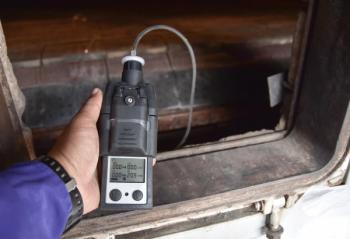
Off-Gas Monitoring for Fuel Dissolution
In this interview segment, Rob Lascola discusses how Raman spectroscopy complements other techniques in fuel dissolution and solvent extraction and what Raman can detect in off-gas streams.
At the 2025 SciX Conference, which took place in Covington, Kentucky, Rob Lascola, a Senior Fellow Scientist at Savannah River National Laboratory (SRNL, Jackson, South Carolina), delivered a presentation titled, “Applications of Raman Spectroscopy For Monitoring and Understanding of Nuclear Materials Processing” (1). Lascola discussed how the use of Raman spectroscopy is key to monitoring and optimizing spent nuclear fuel processing.
As he explained in his talk, Lascola stated that Raman spectroscopy is applied to critical stages such as fuel dissolution and solvent extraction to provide real-time chemical feedback and maintain operational efficiency (1). The research his group has conducted includes developing systems for off-gas monitoring to track dissolution progress and studying the underlying chemistry of these reactions (1). Additionally, Lascola’s group is creating methods to measure acidity in actinide-based solutions during separations, requiring real-time corrections for variable light absorption (1). Raman spectroscopy is also employed to examine the kinetics and chemistry of lanthanide dissolution in organic media, which is important both intrinsically and as a model for actinide behavior. This work forms part of a larger collaborative effort across Department of Energy National Laboratories aimed at advancing spectroscopic techniques for nuclear fuel cycle research and improving process control and safety in nuclear material management.
Lascola’s work focuses on developing analytical methods using absorption, Raman/IR, x-ray, and fluorescence spectroscopies, along with chemometric analysis to enhance data interpretation (2). Much of his research supports nuclear materials processing, particularly actinide chemistry (2). He is also advancing fiber probe–based Raman techniques for tritium processing and nuclear waste remediation and has contributed to characterizing new hydrogen storage materials (2).
In this interview segment, Lascola discusses how Raman spectroscopy complements other techniques in fuel dissolution and solvent extraction and what Raman can detect in off-gas streams.
This interview clip is part of our ongoing coverage of the SciX Conference. To stay up to date with the latest coverage of the 2025 SciX Conference, click
References
- SciX Conference, Applications of Raman Spectroscopy For Monitoring and Understanding of Nuclear Materials Processing. SciX Conference. Available at:
https://scixconference.org/2025-final-program (accessed 2025-10-14). - LinkedIn, Robert Lascola. LinkedIn. Available at:
https://www.linkedin.com/in/rob-lascola/ (accessed 2025-10-14).
Newsletter
Get essential updates on the latest spectroscopy technologies, regulatory standards, and best practices—subscribe today to Spectroscopy.





